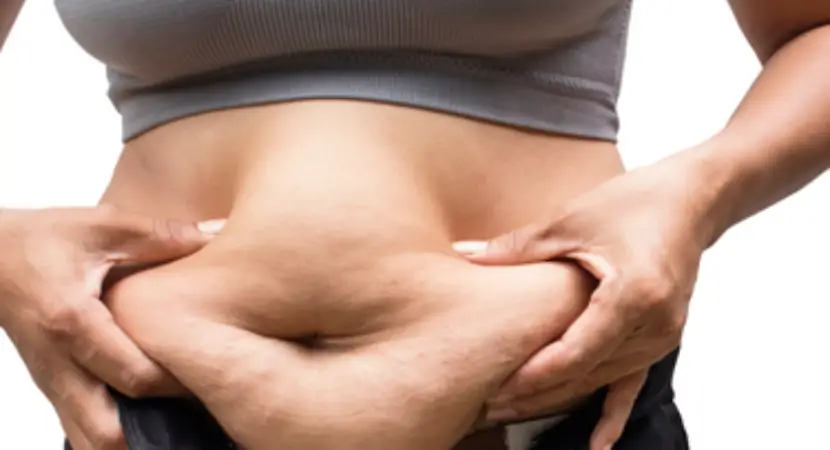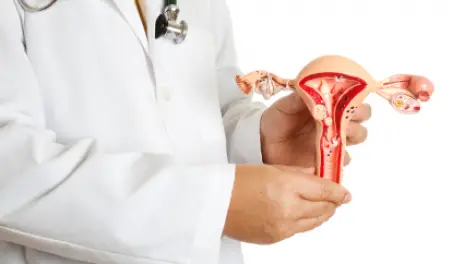F.U.P.A has taken the beauty world like a storm, with talks about what it is, where it comes from and how to get rid of it. The name—an abbreviation for “fat upper pubic area”—sounds just about as bad as it makes you feel if you think you have one. Do you have an excess buildup of fat right along where your pubic hair grows? That is F.U.P.A.
As though it weren’t bad enough to be carrying around a “little extra,” having fat accumulation over your pubis feels like a genuine curse. Why does F.U.P.A. develop? Maybe you see people heavier than you that don’t even have it. It’s possible that you even see your F.U.P.A. as the number one shameful part of your body. Even if you’re good at camouflaging it under certain clothes, the ideas of tight workout clothes, beachwear or any intimate encounter leave you feeling terrible.
But…why’s the fat get stored down there?
![]() Although each case of F.U.P.A. is unique, one common denominator is almost always excess weight. We have no control over what part of our body fat accumulates on, and so as soon as you gain weight, your risk of a F.U.P.A. goes up. There are F.U.P.A.s that are just loose-hanging skin, however they’re less common. Because losing these “skin aprons” has nothing to do with weight loss, they typically have to be addressed surgically.
Although each case of F.U.P.A. is unique, one common denominator is almost always excess weight. We have no control over what part of our body fat accumulates on, and so as soon as you gain weight, your risk of a F.U.P.A. goes up. There are F.U.P.A.s that are just loose-hanging skin, however they’re less common. Because losing these “skin aprons” has nothing to do with weight loss, they typically have to be addressed surgically.
Though the majority of F.U.P.A.s have a great deal to do with being overweight, there are other factors that come into play. After all, not everyone who’s overweight has F.U.P.A. Other reasons include:
Genetic predisposition
Everyone has different “problem” areas, and if you’re genetical built to pack fat on in the nether regions, then you are at high risk for developing a F.U.P.A.—even if you gain just a little weight. Genetic predisposition to store fat in the pelvic area is the main reason that people develop F.U.P.A.
Rapid weight gain
It’s pretty easy to understand how weight gain can lead to F.U.P.A. But even if you don’t have a genetic predisposition to store fat along your pubic area, the faster you gain weight the higher risk you have that your body will store it throughout your upper and lower abdomen—and right into your pelvis.
Weight loss
Weight loss more typically leads to the hanging skin case of F.U.P.A., which does have fat but is also a reality of your skin’s failing elasticity. And, if you were one of those genetically-pre-dispositioned people to begin with, the fat in your F.U.P.A. might be the last thing your body chooses to burn off when you drop pounds.
Muscle laxity
Muscle laxity takes place after childbirth, abdominal surgeries, injuries and accidents. When the lower abdominal muscles are damaged, this sometimes-permanent limited muscular function leads to a F.U.P.A. developing. This F.U.P.A. can be a combination of fat, torn muscle, and skin—but plenty of the time, the muscles can be re-developed.
Inflammatory foods
Even if your weight doesn’t show it, the types of foods you eat can put you at risk of developing a F.U.P.A. Foods and beverages with high fructose corn syrup can encourage pubic fat storage. High-sodium fast foods are also notorious for this, and promote the water retention that makes you feel bloated before you even see the fat accumulate. The consumption of alcohol also promotes fat storage in your pelvis, along with other uncomfortable places.
Stress
Stress—represented physiologically by the production of cortisol—is another known-cause for fat accumulation specific to the abdomen and down the front of the pelvis. If you’ve struggled with F.U.P.A. before and want to keep it off once you shed it, finding new ways to manage stress is one of the most important things to think about.
If you’re one of the lucky few who can hide your F.U.P.A. inside your pants, it’s really only the silver lining to a “problem area” that will be a challenge for you long-term. Because, even if you’ve learned to hide it, the idea of going to the gym or the beach (or stripping down in front of someone) leaves you mortified.
Now that you know what a F.U.P.A. is, it’s might be a tough definition to take in if you’re someone who struggles with it. But, as they say, recognizing the problem is halfway to fixing it, and so the following question has to be: what’s next? How badly do you want to get rid of your F.U.P.A.?
The most effective way to shed F.U.P.A. is to identify what the reason or reasons are behind how you developed it. If you know your diet is the problem, or recently had a baby, the solutions can range from simply fixing your diet to a new exercise regimen or even surgery. An honest assessment of the factors that played into your particular case is essential to your success if you want to shed it!

